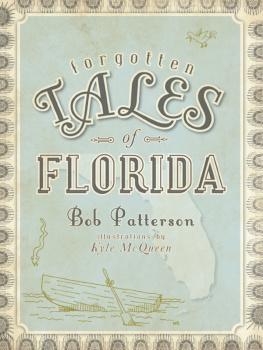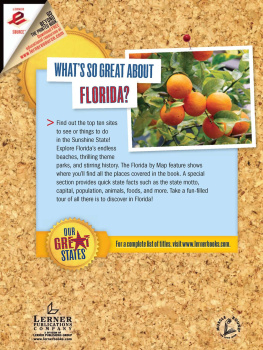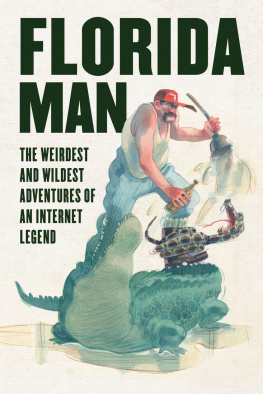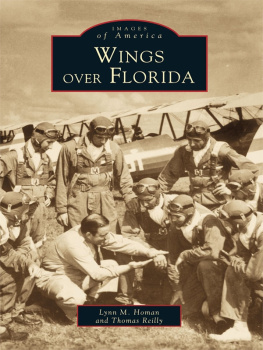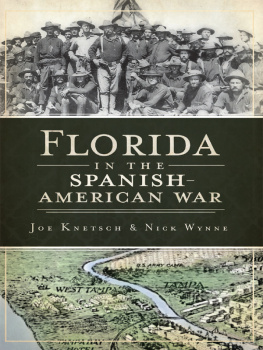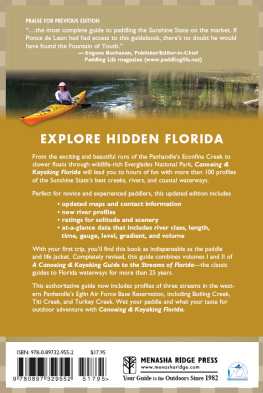FLORIDAS PAST
Volume 3

Useppa Island is surrounded by the worlds greatest tarpon fishing grounds. In this 1890s photo, Edward vom Hofe, inventor of the star-drag reel, shows off his 210-pound tarpon caught in Captiva Pass. See . (DR. JAMES INGRAM COLLECTION)
F LORIDAS
P AST
Volume 3
People and Events
That Shaped the State
Gene M. Burnett

Copyright 1991 Gene M. Burnett
All rights reserved. No part of this book may be reproduced in any form or by any means, electronic or mechanical, including photocopying, recording, or by any information storage and retrieval system, without permission in writing from the publisher.
Inquiries should be addressed to:
Pineapple Press, Inc.
P.O. Box 3889
Sarasota, Florida 34230
www.pineapplepress.com
LIBRARY OF CONGRESS CATALOGING-IN-PUBLICATION DATA
(Revised for vol. 3)
Burnett, Gene M., 1928-1991
Floridas past.
First editionVol. 2. t.p. verso.
Vol. 2 published in Sarasota, Fla.
Originally published in Florida Trend since 1972.
Includes bibliographical references and index.
1. FloridaHistory. 2. FloridaBiography.
1. Title.
F311.5.B87 1986 975.9 86-15048
First paperback edition
10 9 8 7 6 5 4 3
Printed in the United States of America
Photographs in this book are from the Florida State Archives
except where noted.
CONTENTS
ACKNOWLEDGMENTS
Inasmuch as the third volume is but the final series of a single consecutive effort, I would entreat the readerthose at least who have read the first two volumesto consider the acknowledgments in the earlier works inclusively with this volume. In fact, space considerations would only meanly allot the proper expressions of gratitude and indebtedness the author feels toward the many individuals who rendered aid and assistance, palpably or intangibly, to the creation of the total work.
However, for this particular volume, I must express grateful thanks to Clubhouse Publishers, Inc., of Sarasota, and to Pam Daniel, able editor of Sarasota magazine, for permission to reprint the three articles on Mrs. Potter Palmer, the Scotch colonists, and the Sarasota vigilantes. A hearty thanks to Judy Johnson for her incisive copyediting and to Millicent Hampton Shepherd for her photoediting and general shepherding.
A true acknowledgment is that without any one or all of these groups or individuals, the three books would have been, at best, only the lesser for it.
To the memory of
LeRoy Collins
a fellow historian,
but one who made Florida history
and was that history himself.
INTRODUCTION
With this third and final volume on Floridas past, there comes a wistful tug of separation, a pulling away, a feeling not unlike the end of harvest after a fruitful season. But there is also the sanguine satisfaction of a finished task, completion. The work of years passes out of you and now sustains its own viability; whatever merit it possesses must surely be defined by the final arbiter, the reader. This is as it should be.
Despite the sometimes thorny passages and the frustrations of creative composition, I have enjoyed the making of it and have been more than gratified by the response forthcoming. I regard it all as a token and a gift, a restoration and a sharing of what we have been and of what we are still all about. And this is to ask enough.
Gene M. Burnett
F LORIDAS
P AST
Volume 3
The lines have fallen to me in pleasant places; indeed my heritage is beautiful to me.
Psalm 136:21 (NAS)
Achievers and
Pioneers
1.
The Florida Birth of
Hitlers Buzz-Bombs
The first guided missiles, flown in Arcadia, were often comical Rube Goldberg contraptions.
The most terrifying weapon launched against the Allies in World War II was the V-2 guided missile, or flying bomb. Coming in faster than the speed of sound, it gave no warning before its near ton of explosives obliterated a factory complex or an entire city block. Fortunately, its debut in the fall of 1944 came too late to save the crumbling Nazi Reich.
Few are aware today that the prototype of the guided missile had its birth in the era of World War I, not World War II, and not in Germany, but at Floridas Carlstrom Field, the Army air base in the small rural town of Arcadia.
Of course, none of the farmers, cowboys, and general citizenry found anything too terrifying about this earliest version of a pilotless bomber. Indeed, it more nearly resembled one of Rube Goldbergs less inspired creations, and the efforts of its developers to get it to do something (such as fly to a target and drop its payload on it) had freakish and sometimes comical results. At best the weapon might have distracted a few cows grazing around the placid Peace River Valley country.
With Americas entry into WWI in April 1917, military planners in Washington began a search for new weapons, particularly ones that would expend machines rather than men. Interest in a guided missile had developed much earlier as a result of research by Elmer Sperry, inventor of the gyrocompass. His son, Lawrence Sperry, was already engaged in U.S. naval research in this area.
The Army finally came up with a plan for a small pilotless and expendable airplane, one that could carry about 300 pounds of explosives, fly 50 miles or more under its own controls, and bomb a target with reasonable accuracy. To undertake this project, the Army in December 1917 picked C.F. Kettering of Dayton, Ohio, inventor of the electric self-starter ignition for automobiles and vice president and head of research for General Motors.
An industrialist-engineer of philosophic bent, Kettering once mused: We find that in research a certain amount of intelligent ignorance is essential to progress; for, if you know too much, you wont try the thing. Whether Kettering had too little of the former or too much of the latter is not certain, but the Kettering Bug, as the missile came to be called, seemed plagued with bugs from the start.
Variously called a flying bomb, robot bomb, and aerial torpedo, it was regarded more as a loose cannon than a guided missile after its initial tests. In the first unofficial test, the little plane took off as planned, climbed steeply to 150 feet, then whip-stalled, turned, and dove straight toward the spectators below; they scattered to safety as it crashed. Another test saw the Bug launched successfully, but then it climbed to an unplanned 12,000 feet, circled the field a few times, then disappeared behind a cloud patch. Said a disgusted Kettering, Let the thing stay up there. He then went home to bed while other officials chased the plane by car and discovered the crash site 21 miles away. But another torpedo launched perfectly, flew at its preset altitude, dove on the target 500 yards away and missed it by less than 50 feet.
Despite these erratic test results, the Army was encouraged enough to order a limited production of the missile. One enthusiastic observer, Colonel H.H Hap Arnold (later head of the U.S. Air Force in WWII), hurried over to France in October 1918 to inform General John J. Pershing of this exciting new weapon. A flu attack delayed Arnold, and he arrived at the front only to hear the guns celebrating Armistice Day, November 11.
Next page

